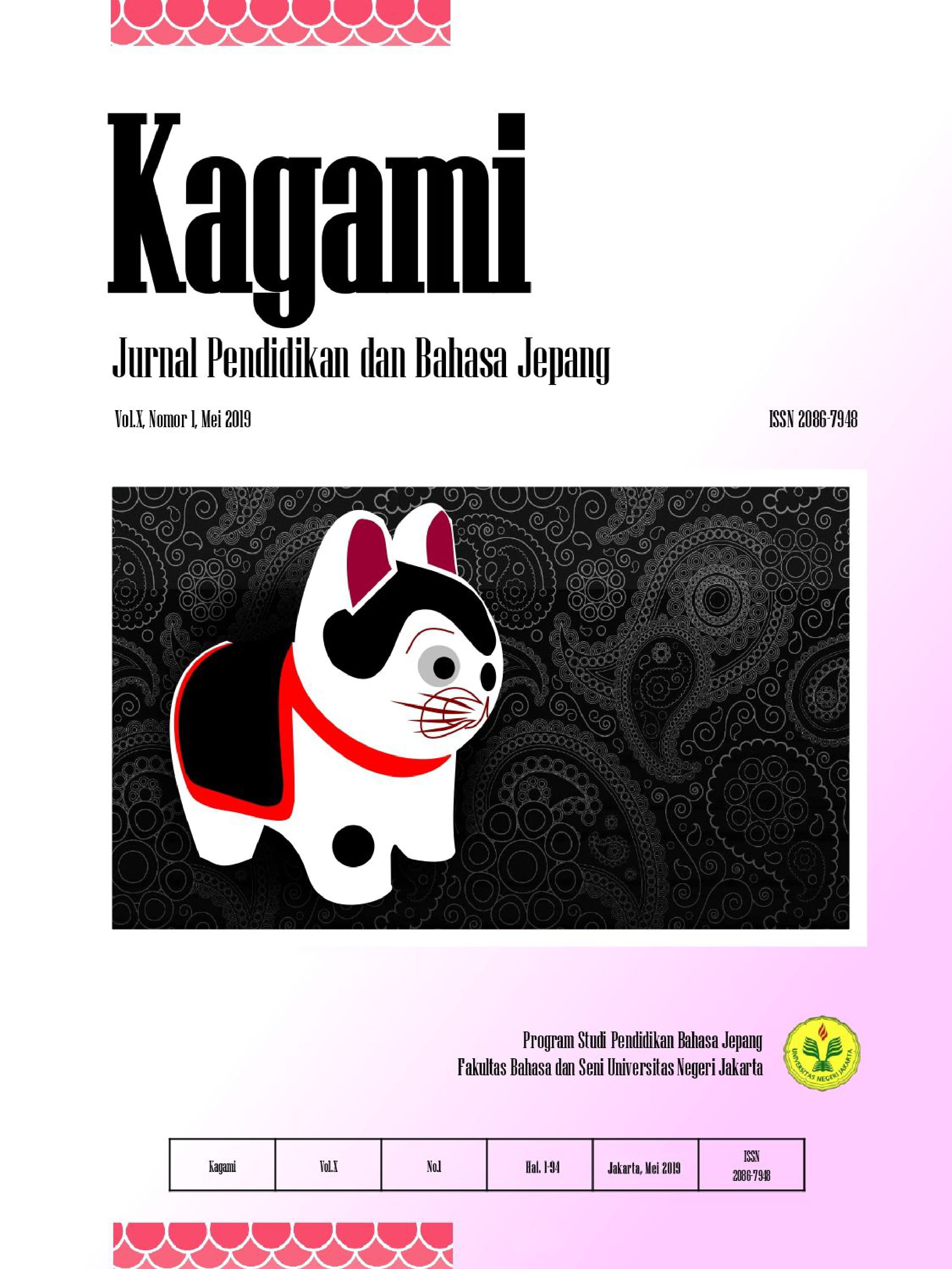PENERAPAN MODEL COGNITIVE ACADEMIC LANGUAGE LEARNING APPROACH (CALLA) DALAM PEMBELAJARAN CHOUKAI DI STBA JIA
Keywords:
learning strategy, cognitive, metacognitive, CALLA Model, ChoukaiAbstract
This research objective is to examine the results of CALLA model application in learning Choukai. The use of the model is expected to help learners maximize their learning proses and results. Subjects of this study are 28 students that divided into two groups which it consists of 14 students for each. The experimental group is treated by implementing CALLA model to improve listening comprehension for five weeks, whereas the control group is treated without any particular ways during class. The results showed that the CALLA group has gained 82.28 point's averages score, it is better than non-CALLA group that gained 71.92 point. The t-test result showed that there is a significant difference of students listening comprehension competence between CALLA group and non-CALLA group. The questionnaire result showed that students liked to use this model since it can help and facilitate them to comprehend the topic of listening text better. Furthermore, it helps them improving their motivation in learning Japanese.
References
Arono. (2012). Model menyimak aktif integratif berbasis kearifan lokal sebagai determinan peningkatan keterampilan berpikir kritis. Riksa Bahasa: Kearifan Lokal dalam Pembelajaran Bahasa dan Sastra, 5 (1), 19-28.
Bloomfield, et al. (2010). What makes listening difficult: Factors affecting second language listening. [Online]. Tersedia: http://www.casl.umd.edu/sites/default/files/TechDetails.TTO%2081434%20Final%20Tech%20Report%20E.3.pdf [Diakses 14 Mei 2015]
Chamot, A. U & O'Malley, J.M (1994). The CALLA handbook: Implementing the cognitive academic language learning approach. [Online]. Tersedia: www.ncela.us/files/rcd/be021100/implementing_the_cognitive.pdf
Chamot, A. U. (1995). Implementing the cognitive academic language learning approach: CALLA in Arlington, Virginia. The Bilingual Research Journal, 19.379-394.
Chamot, A.U & Robbins, J. (2005). The CALLA model: Strategies for ELL student Success. Tersedia: jillrobins.com/calla/CALLAHandout.pdf. [Diakses 5 November 2014].
Cohen, A. D. (2000). Strategies in learning and using a second language. Foreign Language Teaching and Research Press.
Coskun, A. (2010). The effect of metacognitive strategy training on the listening performance of beginner students. Novitas-ROYAL Journal, 4 (1), 35-50.
Goh, C. A. M. & Said, Y. (2006). Metacognitive instruction in listening for young listeners. ELT Journal, 60 (3), 222-232.
Lee, C. K. (2010). An overview of language learning strategies. ARECLS Journal, 7, 132-152.
Osada, N. (2004). Listening comprehension. Dialogue, 3, 53-66.
Oxford, R. (1990). Language learning strategies: What every teacher should know. New York: Newbury House.
Riyanto, Y (2009). Paradigma baru pembelajaran: Sebagai referensi bagi gurupendidik dalam implementasi pembelajaran yang efektif dan berkualitas, Jakarta: Kencana.
Robbins, J. (2007). Lend me an ear: Teaching listening strategies for world language learning. [Online]. Tersedia: http://www.nclrolorg/about_teaching/topics/PDFS/0711_lend%20me%20and%20ear.pdf [Diakses 05 Novemberd 2014]
Vandergrift, L (2004). Listening to learn or learning to listen? Annual Review of Applied Linguistic Journal, 24,3-25.





